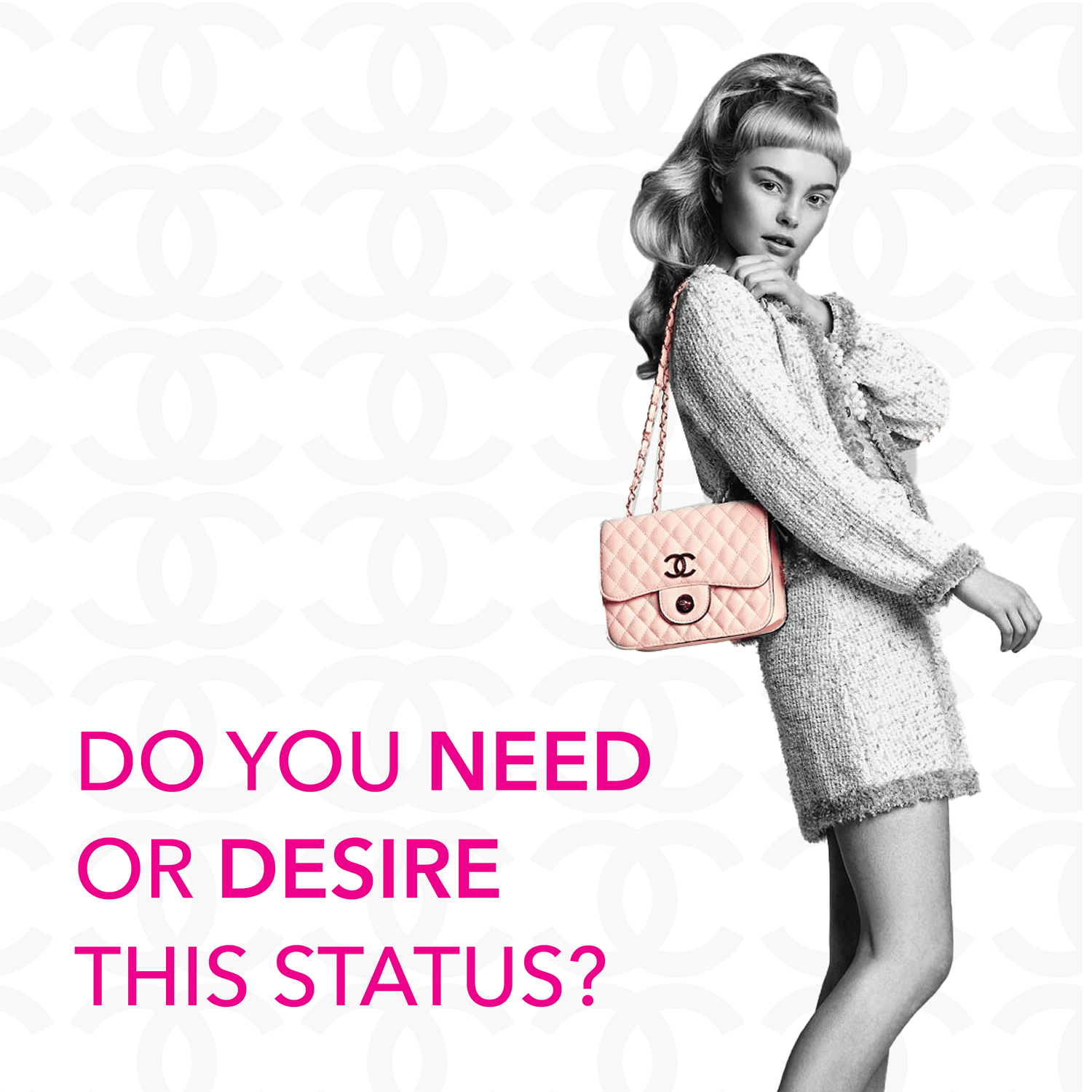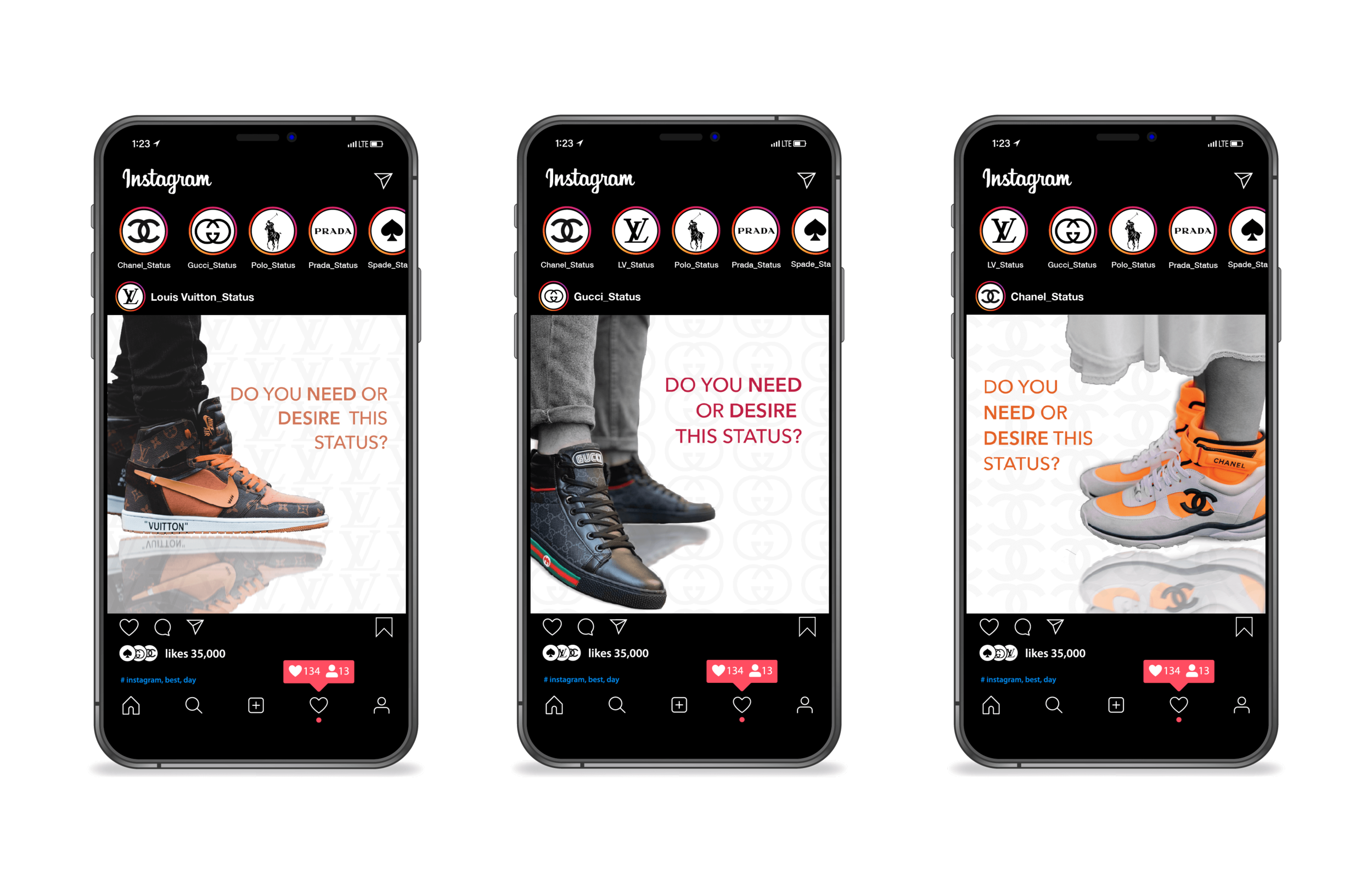Davida Martinez
Do You Need or Desire Status?
Below is the survey that is provided to the user to participate in after viewing the social media campaign. This survey allows the user to express their opinion on luxury brands and provides additional research based upon the users perspective.
In society, brands are used to visually communicate their consumer’s identity, and are used as materialistic status symbols to divide society. It is mentioned in The Human Brand: how we relate to people, products, and companies the human species requires a need for connection. This need informs how humans, as a species, form relationships based on trust and loyalty. These emotions have allowed brands to gain the confidence of consumers and form an emotional connection. Based on the emotional connection brands form through trust and loyalty, capitalism has divided brands into luxury and non-luxury status. There are different levels of luxury brands and each has a different meaning to its consumer. The business model of luxury brands is based on positioning. It is mentioned in Global Luxury that the term luxury is subjective because it is evoked by an individual's perception and experience of a brand.
Luxury brands position themselves by standing out and use this technique to elevate value to their consumers. The elevated experience is of high value to the luxury market’s target audience because they are willing to pay a considerably larger amount of money for this experience. The elevated experience that luxury brands convey forms a sense of excellence and exclusivity. Luxury brands market to a smaller group of consumers who have a similar ideology that aligns with the brand, forming a sense of exclusivity within the brand. Luxury and non-luxury brands have become a way to identify and judge people's social status just by a glance. Luxury consumers hold material value in a higher position than personality, based on the power that capitalism has given brands. This is problematic because luxury brands’ marketing strategy targets a feeling of desire the consumer feels from purchasing a luxury product, and is not based on a human need. In relation to Maslow's Hierarchy of Needs, consumers’ esteem and self-actualization needs are prioritized over physiological needs. Therefore my thesis project intends to bring awareness to the status symbols luxury brands form that divide society materialistically based on the desire the consumers feel from the purchase. This social media campaign calls to attention how luxury consumers inform their investments based on needs of self-esteem, status, and self-recognition.
1.Chris Malone and Susan T. Fiske, The human brand, how we relate to people, products and companies (New Jersey: John Wiley & Sons Incorporated, 2013), 18-27.
2.Donze, pierre-Yves, Rika Fujioka, Global Luxury: Organizational Change and Emerging Markets since the 1970 (London:Palgrave Macmillan, 2017), 5-7.
3.“What makes Luxury Brands Expensive,” YouTube video, 7:32, “Discovr,” September 21, 2020, https://www.youtube.com/watch?v=ErbmlkkHF9c.

Social Media Campaign
How do luxury brands use excellence and exclusivity to form status symbols that divide society materialistically based on the desire the consumer feels from purchasing something of higher value?
Social Media Graphics
This social media campaign calls attention to the division luxury brands form in society based on material value. It brings an awareness of consumer cultures desire for luxury, and asks the viewer to question if luxury is a need or want of excellence. The three brands featured in this campaign are Louis Vuitton, Gucci, and Chanel. Each graphic is black and white with a pop of one bright color, following the trend of luxury marketing.
In a very similar fashion to the way women display their handbags as a form of status, men do the same with shoes. The second three graphics in this social media campaign highlight luxury shoes. These graphics are targeted to capture the attention of the male luxury consumer, providing multiple perspectives.
The first three graphics in this social media campaign highlight luxury handbags and the status symbols they represent. Designer hand bags are one of the most popular items in the market. Women use their handbags to make a statement about who they are. A women is judged on who she is in society based on the bag she carries. Not only does this have to do with social status but female-to-female competition as well. The more expensive and luxurious a women’s bag is the more dominance she has.
Diana Derval, Designing luxury brands: The Science of Pleasing Customer’s Scenes, (New York: Springer, 2018), 52-55.









